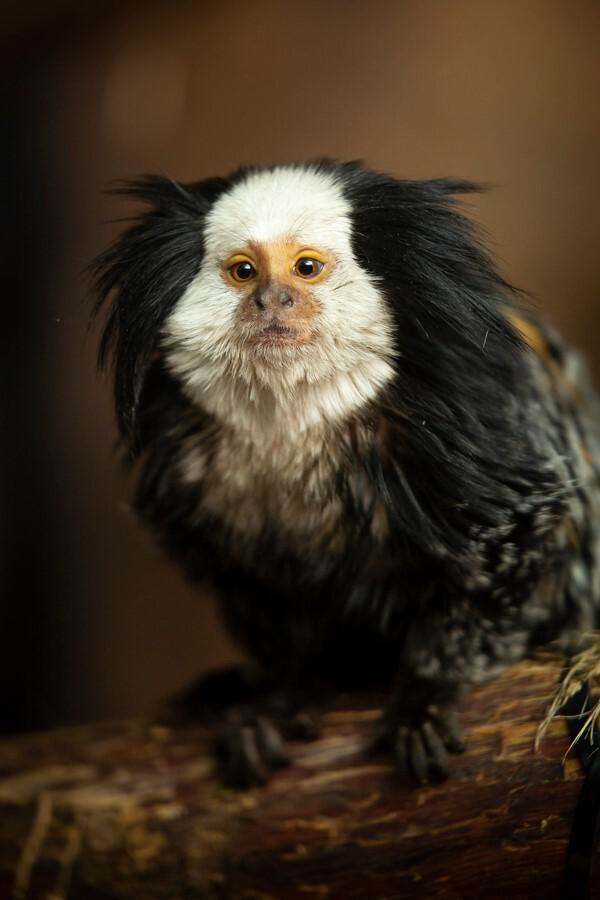
Geoffroy's Marmoset
Callithrix geoffroyi
Did you know?
- Geoffroy's marmosets are part of the Callitrichidae family, which they share with marmosets and tamarins.
- They are also called white-headed marmosets and tufted-ear marmosets.
- They live in forests in Brazil.
- They are among the smallest monkeys on Earth.
- A female will give birth to twins.
Adaptations
Marmosets are omnivores and are the only primates that regularly gouge their own holes in trees with chisel-like teeth to tap into gum. Around a day after they create the holes, they come back to eat the gum that has oozed out. Since they are small, they work together and will take turns acting as "look out" for predators.
Young and Family
Geoffroy's marmosets are social primates that live in large family groups. Each group of marmosets is typically comprised of eight to 10 monkeys, but it can reach up to 20! Females almost always have fraternal twins, and for the first week after they are born, the father is the only family member that carries the babies. After that, everyone helps care for the babies, with dad still being the main carrier. Older siblings learn how to care for their potential future babies this way.
Threat Level
- Unknown
- Common
- Near Threatened
- Threatened
- Endangered
- Critically Endangered
- Extinct in the Wild
Common
The Geoffroy's Marmoset is widespread and abundant.
Range
Eastern Brazil
Habitat
Lowland rain forest

We care about Geoffroy's marmosets
Geoffroy's marmosets are greatly threatened by habitat loss. The Saint Louis Zoo participates in the Species Survival Plan for Geoffroy's marmosets, a cooperative breeding program that helps ensure a healthy population of animals. Learn more about how we are helping wildlife around the world.
Find this animal in Historic Hill

SAINT LOUIS ZOO ZONE
Historic Hill
Historic Hill is a lovely stroll through one of the oldest parts of the Saint Louis Zoo. From the 1904 World’s Fair Flight Cage to the Spanish architectural flavor of the 1920s in the Bird House, Primate House and Herpetarium to the finishing touches of our thoroughly modern exhibits, this area of the Zoo has a unique ambiance and a nostalgic history that make it a great destination.

